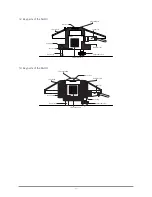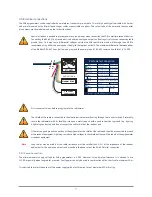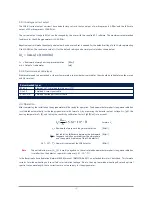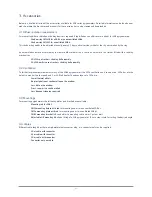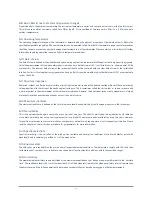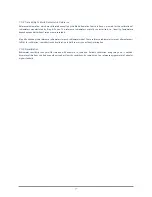
2.4.3 Measurements during a sunny day
The SGR4 differs from all other pyrgeometers in that it allows accurate daytime measurements on sunny days without the need
for a shading device. Due to the unique construction of the SGR4, solar radiation of up to 1000 W/m² induces window heating
of less than 4 W/m² in the overall calculated downward radiation.
Formula 1 can be applied without any problems with the following exception; one must take note of the amount of infrared
radiation in the solar spectrum. The amount of solar infrared radiation depends on many parameters; for example the water vapour
content in the atmosphere (humidity), location of the SGR4 at a certain altitude and the sun’s declination angle. The next graph
indicates the possible infrared radiation in the solar spectrum in the case of low water content in the atmosphere. The amount of
solar infrared detected at the SGR4 (and the SGR3) is expected to be very low (0 to 3 W/m²) because of the filter cut-on at 4.5 µm.
Other types of pyrgeometers can exhibit 0 to 10 W/m².
Direct solar irradiance in Davos, Switzerland at solar noon in mid-September
2.5 Measurement uncertainty
When a pyrgeometer is in operation, the performance of it is correlated to a number of parameters, such as temperature, level of
irradiance, angle of incidence, etc. Normally, the supplied sensitivity figure is used to calculate the irradiances. If the conditions
differ significantly from calibration conditions, uncertainty in the calculated irradiances must be expected.
Kipp & Zonen expects maximum uncertainty below 3% for daily totals for the SGR4 pyrgeometer. This remaining uncertainty can
be reduced further if the sensitivity of the pyrgeometer under the prevailing conditions is used, with corrections calculated
from the effects of parameters such as temperature and non-linearity. This is especially convenient with a programmable data
acquisition system.
Amount of Longwave Radiation in the Solar Spectrum
Wavelenght [µm]
Power [W cm
-2
µm]
(Davos at solar noon, mid of September)
0.00125
0.001
0.00075
0
2.5
5
7.5
10
12.5
15
0.00025
0.00025
Filter cut-on
20





